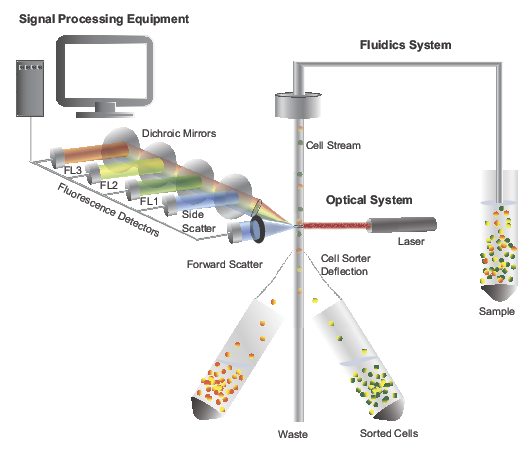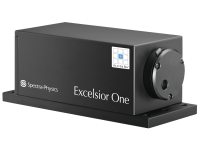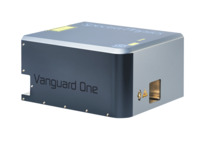Flow Cytometry
Flow cytometry is an analytical technique that can rapidly measure the properties of individual cells or particles as they pass through a beam of light, typically a laser. A flow cytometer takes a sample of cells, transitions them into a single stream and uses lasers and/or light sources to excite biomarkers or labels on the cells to count the number of relevant constituents. The properties measured include relative particle size, relative granularity or internal complexity, and relative fluorescence intensity.
A flow cytometer (Figure 1) consists of the three major component systems
- The fluidics system that transports sample particles to the laser beam in a narrow, single particle wide stream.
- The optical system composed of lasers or light sources that illuminate the particles in the sample stream as well as optical filters and beamsplitters that direct the post-sample light signals to optical detectors for counting and processing.
- The electronics and signal processing equipment that converts the detected optical signals to electronic signals for processing and analysis.
Please see our Flow Cytometry application note for additional information.

Figure 1. Schematic of a flow cytometry system.



 Ultra-High Velocity
Ultra-High Velocity